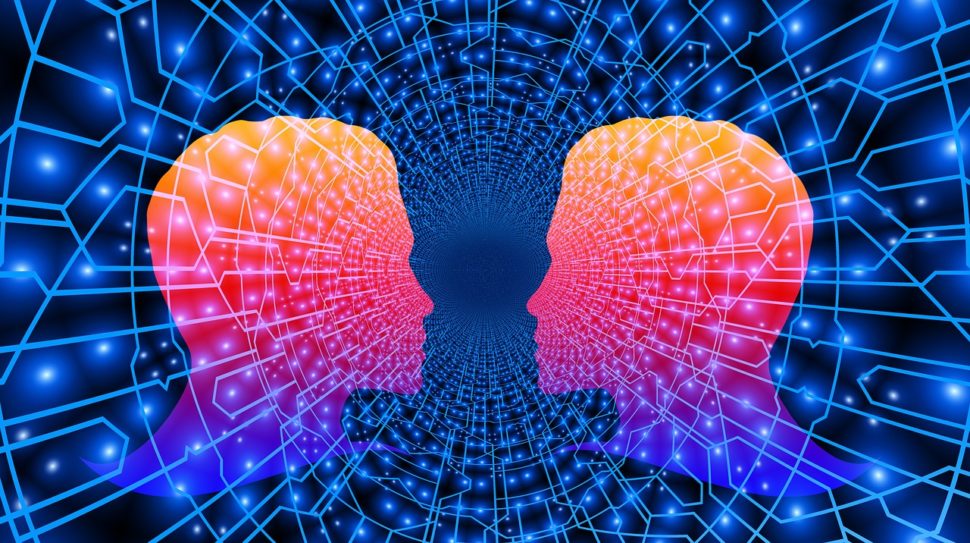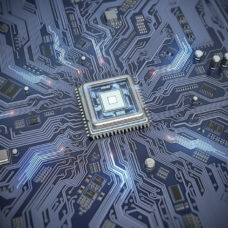AI and data analysis are a match made in heaven, and researchers are making liberal use of them in the landscape of modern medical research. If you want to kill cancer, then you may need some help from an AI.
Every field in the vast world of scientific research is keeping a keen eye on what AI can do for them, and by extension, so is the rest of mankind.
That may sound like what we call an ‘absolute statement,’ but it’s true, and new research out of the University of Maryland and Tufts University is an excellent example of how we can confirm it. You might not think that data science and medicine mix all that well, but you would be wrong. A research team from the two universities has made good use of a machine-learning platform to aid in the understanding of how cancerous cells develop.
But before we focus too much on medical research, let’s take a moment to remember what kind of AI we are utilizing in the current technological landscape that is Industry 4.0.
#deeplearning #neuralnetworks reverse engineered a #cancer #cellClick To TweetBefore deep learning neural networks, we had rudimentary AI that was fit for video game villains and basic (read: useless) pre-programmed responses. When we started asking these early networks to solve complex problems, we noticed that they could not use the experience of past calculations to solve current problems. This lack of recall was known as catastrophic forgetting. Deep learning enabled machines to remember past conclusions, and their capabilities expanded.
Because of deep learning, we see an entirely new breed of thinking machines. And ‘thinking machine’ is the correct phrasing, because the whole point of modern AI is that they can think, learn, and improve their ability to make judgments. Once upon a time, I was beating Tetris AI on hard mode, and now I have an assistant that lives in a cloud and reminds me where to turn.
Our dreams of robot translators like C-3PO aren’t quite so unrealistic now, are they? Thank the maker.
All right, now that we’re on the same page, let’s talk medicine.
In theory, humankind can understand the many interactions of biological processes at the cellular level by observing them, but in practice, we don’t have the kind of lifespan that it would take to record and analyze those interactions to the point of being able to cure diseases like cancer or Alzheimer’s. That’s where we need AI: not to replace our researchers, but to enhance their ability to do research.
The Cancer Experiment
Back to U of M and Tufts, researchers are hard at work making the future a healthier place to live, and they are using a little bit of help from AI to do it.
The team used an AI to learn a little bit more about the biophysics of cancer, combining cutting-edge medical research with the latest in accurate data-crunching. In a previous round of research, the scientists found that the pigment cells, called melanocytes, in tadpoles could be converted into a cancer-like form, and thanks to an AI that could reverse-engineer that process, they discovered that all the melanocytes in a single larva either transformed into cancer or didn’t change at all.
Taking a cue from that study, the researchers then set out to find out how to achieve a partial melanocyte conversion within the same animal. This time, the team tasked the AI with answering that question, and it delivered a very satisfactory result.
According to their AI model, three reagents can achieve partial melanocyte conversion: altanserin, reserpine, and VP16-XICreb1. This chemical cocktail was used in vivo on tadpoles, eliciting a transformation of melanocytes in localized areas within an individual frog larvae, leaving the non-converted parts untouched. It is worth noting at this point that this outcome had never been seen before.
According to Michael Levin, Ph.D., “Our system predicted a three-component treatment, which we’d never have come up with on our own, that achieved the exact outcome we wanted, and which we hadn’t seen before in years of diverse experiments.”
The model discovered by the AI was used in 576 virtual experiments, each of which simulated the process of embryo development 100 times under various combinations of drugs. 575 of these tests simply didn’t give researchers what they were looking for, but that 576th try used a precise combination of the three aforementioned reagents, and it unlocked exactly what the researchers had been hoping for.
The model provided by the AI predicted how many tadpoles would retain normal melanocytes within 1% of the in vivo results while aggregating those tadpoles that would undergo partial or total conversion in vivo. From here, the team plans to incorporate time-series data that will help them fine-tune more accurate comparisons between the computer and in vivo models.
The experiment provides a proof-of-concept for what we were discussing earlier. Using AI to crunch extreme amounts of data is far more efficient than doing so manually.
So, if this experiment provides a proof-of-concept, where can that concept lead us?
The Implications
This experiment showed us that the implications for AI-assisted research could permeate any field where massive amounts of data need to be analyzed.
But the research team is interested in the medical applications, and rightly so. After all, their research may lead to the magic bullet that prevents cancer. Furthermore, researchers hope that the approach can extend to the field of regenerative medicine by discovering how to reprogram tumors, accelerate regeneration, and even control stem cell dynamics.
Physiological networks such as the one that converts melanocytes are incredibly complex. We can line up all the data in the world about them, but we need AI to actually analyze that data to give us the information we need without bothering with all that we don’t. If we want to control our various biological processes, we need to understand these physiological systems. Thanks to the researchers at U of M and Tufts, and a little bit of machine learning, we are on the cusp of that level of understanding.
Who knows, we may even kick cancer to the curb.



















‘There’s got to be a great line drawn between these crypto scammers and the havoc they are wrecking on their victims. How would have I survived this tragedy of losing almost Six hundred and fifty-eight thousand Pounds to an impostor posing as a Blockchain trade agent? I just can’t stop emphasizing the good deeds of CY-BER GENIE HACK PRO. I don’t want to be like the 10 blind men from the bible who Jesus delivered them but only one came to appreciate his gestures to them. I am posting this review for myself, I am contributing my quota of making the internet the safe place it used to be by referring scammed victims to (CY BERGENIEHACKPRO) on Telegram for assistance in tracing, and high chances of recovering their stolen money. I wish those who had been rescued from fraudsters by Cyber Genie Hack Pro’s team could post their success stories like mine, doing so, they will reach a larger audience thereby creating more awareness that you can recover your stolen money from scammers. My dealings with Cyber Genie were great, I first had my reservations because I had already lost hundreds of thousands worth of crypto coins, but I was thrilled by their engagement to my task of recovering my stolen money. Never give up if you have been scammed, CYB-ER-GE-NIEH-ACK PRO is all you need. You can find them on their WhatsApp also: (+)(1252-512-0391) Mail them on; (cybergenie(@)cyberservices(.)com)’